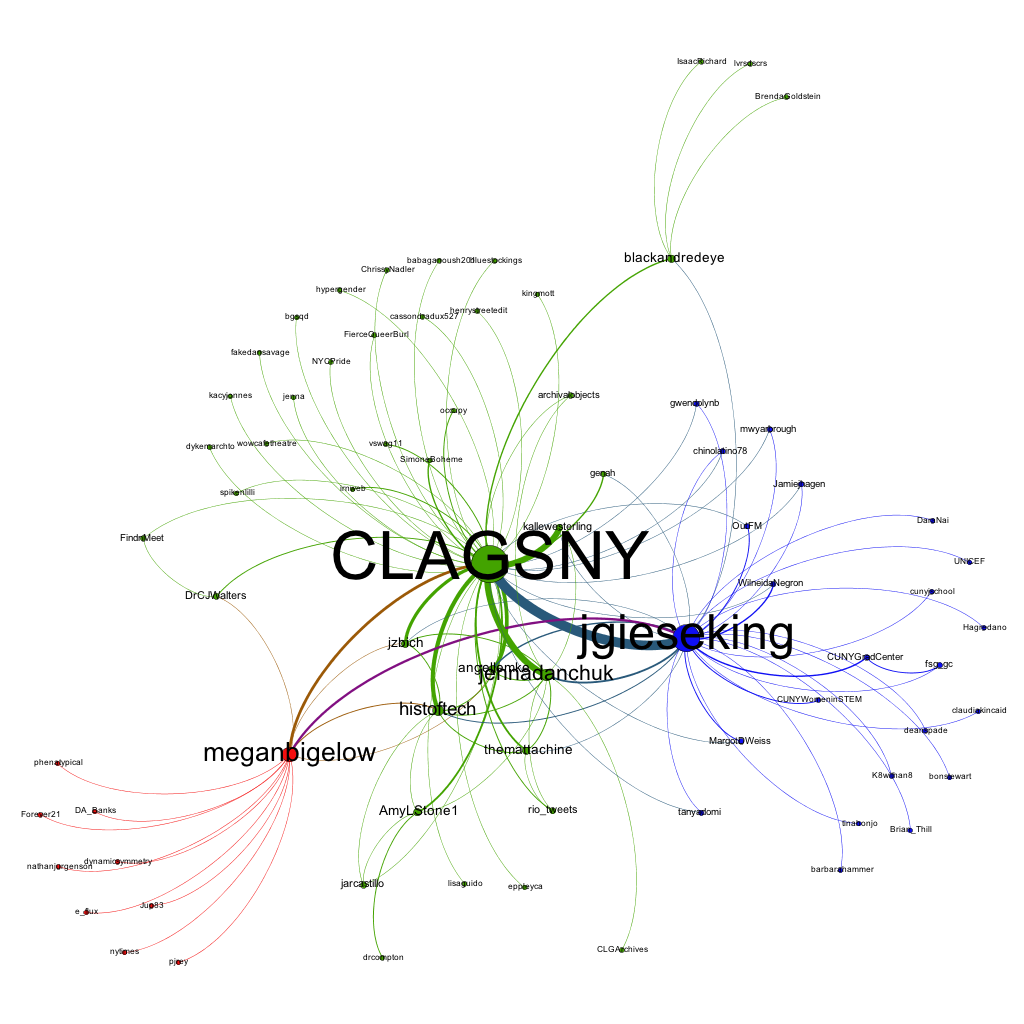For those of you interested not only in the conversations we shared in the class–that are available via video on this site or in the comments below each week’s post for the course for those who talked in the chat window–the Twitter hashtag archive for #CLAGSqNY is now available at the bottom of this post.
I have also rendered a social network analysis of Twitter mentions of various individual’s handles (namely those in the class) who used the #CLAGSqNY hashtag. Each dot below is a person or group tweeting. Each line indicates they mentioned or were mentioned by someone else connected to them. A total of 502 tweets let us see that three major networks of communication (based on the colors of the connections) formed on Twitter: @CLAGSNY (Center for Lesbian and Gay Studies), @meganbigelow (artist Megan Bigelow), and @jgieseking (me). We also can see that while there are a number of folks on the edges only mentioned once (one line to or from their dot) which indicates a lack of conversation, there are more folks with two or more connections to others, showing a level of connection between those involved in CLAGSqNY.
For those out there still checking in on this site, I have taken a position at Bowdoin College. Please feel free to reach out!
